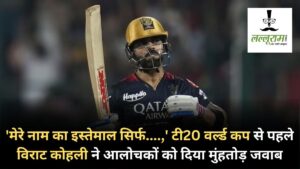In the hazard zone of the drag-flick: Tirkey, Rasquinha recall fractures, shut calls, Pakistan’s Sohail Abbas’s pace
5 min readDilip Tirkey is scarred for all times. Literally.
Eighteen years in the past, in October 2004 at Delhi’s National Stadium, Tirkey was manning the best goalpost when Pakistan legend Sohail Abbas unleashed his trademark ferocious drag-flick. On the left submit was Viren Rasquinha. And they each watched in dread as goalkeeper Adrian D’Souza, in his inimitable type, charged out to dam Abbas’ shot.
For Rasquinha and Tirkey, D’Souza’s runs made the sighting the ball that a lot harder. “If he wouldn’t be able to stop the ball, it would come through his legs or under his arms. And Sohail had a sling action, so you couldn’t judge where the ball was going,” Rasquinha says.
“In that match against Pakistan, we had planned that Dilip would take the right post down and I’d take the left. Sohail flicked, Adrian rushed out, the ball it deflected slightly off him and deviated from its path.”
Tirkey, not a person of many phrases, will get within the circulation whereas narrating what occurred subsequent. “I wasn’t able to spot the ball. When Adrian rushed out, I just turned a little and before I could even react further, the ball hit my eye. Ekdum sunn hogaya thode second k liye and phir, gir gaya (I went numb for a few seconds and then, fell to the ground). I couldn’t open my right eye.”
Tirkey suffered a hairline fracture just below his proper eye. He says he’s trembling even now, whereas recalling the incident that occurred practically 20 years in the past. “The mark is still there and it pains even today, especially during winters,” he says.
The potential hazard of the hockey ball flying at excessive speeds following a drag-flick and the way forward for the penalty nook, an integral a part of the game, is up for dialogue and assessment after the International Hockey Federation launched a session undertaking titled: ‘Future of the Penalty Corner’.
Future of the Penalty Corner – Global session undertaking
We invite you to fill in a brief on-line questionnaire to seize opinions on the present penalty nook guidelines, in addition to concepts for the long run.
Follow the hyperlink to take part: https://t.co/UpjKoOG4cZ pic.twitter.com/RYnyXBoKwF
— International Hockey Federation (@FIH_Hockey) May 6, 2022
The hazard throughout drag-flicks is extra pronounced for defenders, particularly the primary rushers, the participant who runs in direction of the glint to chop his angle, and the postmen, these guarding the posts, like Rasquinha and Tirkey.
When the 2 of them performed, the defenders didn’t put on plenty of protecting gear. Like Gavaskar dealing with the fearsome West Indian pacers with nothing else however solely a floppy hat, the defenders again then depended largely on their reflexes, and just a little luck.
“I won’t lie, we used to be very scared. Ball zoo-zoo karke jaata hai,” Tirkey says. Rasquinha, who shared that concern, provides: “We stood without any protection at all, except the abdomen guard. Most of us didn’t even wear gum guards so my colossal fear was that the ball would hit me bang on my teeth and I’d lose all of them. If was a genuine fear.”
Over the years, the principles have modified and defenders are given 40 seconds to put on all their protecting gear – face masks, gloves, knee pads, and such. It has diminished the severity of accidents in some instances and proponents of drag flicks say the developments in expertise needs to be used to make penalty corners safer, quite than altering the principles.
“For me, it’s like F1 racing,” says Gonzalo Peillat, whose drag flicks launched Argentina to the highest of the rostrum within the Rio Olympics. Peillat, who now represents Germany in worldwide hockey and is without doubt one of the best up to date drag-flickers, isn’t happy with FIH’s transfer, saying that penalty corners aren’t any much less harmful in comparison with different conditions from open play.
“I don’t think it’s (the PC review) a good idea. In F1, there are less and less injuries because of the technology. We can have the same even in hockey. We use a lot of equipment that protects everything, from the face to the foot. In the last two Olympics, there wasn’t even one injury through penalty corners,” Peillat says.
That doesn’t essentially imply they’re utterly secure.
At the Tokyo Olympics, India defender Amit Rohidas, thought of to be one of many best first rushers within the nation, suffered bruises on his chest, stomach, knee and ankle in only one match – towards Germany within the bronze medal playoff. What Rohidas does is dubbed in hockey as ‘suicide running’ – charging immediately in direction of the glint, to cease the shot even when it means struggling a blow.
The FIH has argued that the protecting gear has given the defenders a false sense of safety, which results in them operating straight into the trail of the ball with out pondering of the implications. Rasquinha agrees. “The speed at which the ball travels, no face mask will protect you if you get hit directly,” he says.
Rasquinha’s thoughts harks again to the early winter encounter towards Pakistan in 2004. After the match in Delhi, the place Tirkey bought injured, the caravan moved to Chandigarh and from there, to Amritsar the place Abbas scored his world report 268th aim.
Rasquinha remembers the aim not only for the report, but in addition as a result of it practically took his head off. “I was guarding the left goal post. And again, Adrian charged out. This time, the ball came from under his armpit. I could not see it until the last second when I noticed that it was headed straight for the middle of my eyes. I just ducked at the last split second and as the ball went over my head, I could feel the breeze…” he says.
The shot was so quick, the previous India captain provides, that the ball tore via the web and hit the commercial boards. “The referee thought it went over the goal and signalled out. But all the Pakistani players and I knew it went into the goal.” Rasquinha pauses momentarily to replicate. Then provides: “I had no face mask, no gum guard… I could have died that day.”






